
Station Name: BENTLEY CHURCH[Source: Nick Catford]
church_old1.jpg) Bentley Church Road crossing keeper's cottage and the probable site of Bentley Church station c1920. Similar gate keeper's cottages were seen elsewhere on the branch at Capel, Jermyn's, Wenham and Raydon crossings.
Photo from John Mann collection  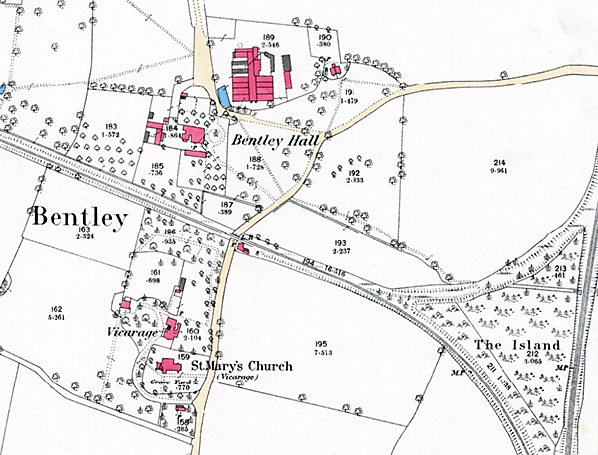
1882 1:2,500 OS map. The gate keeper’s cottage is seen on the east side of Church Road. The stopping place, if it existed, is probably in front of the cottage. The spur north towards Ipswich is also seen. The line was laid but it was probably never used as the diversion was abandoned.
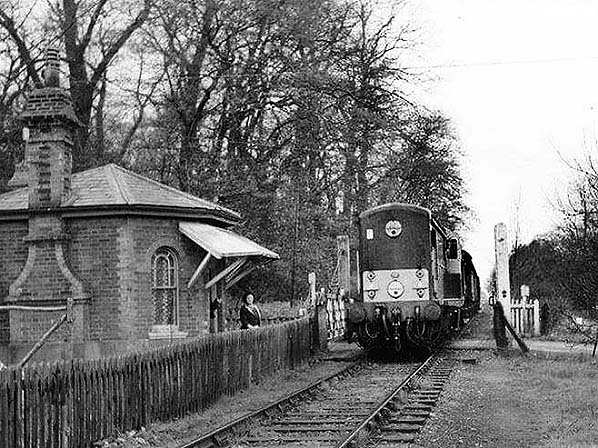
In early 1964 British Thomson-Houston (BTH) Type 1 Class D8/1, later Class 15, No. D8226 moves over Church Road Crossing, Bentley, with the 4.10pm Hadleigh - Ipswich goods. The church of St. Mary, Bentley, is a short distance along the road to the left and the site of the short lived Bentley Church station is alongside the crossing keeper’s cottage. Careful examination of the track in the foreground shows it is starting to curve; this is the start of the curve taking the Hadleigh branch toward the main line which it will parallel to Bentley Junction, just north of Bentley station. The formation of the abandoned and quite sharp west-to-north curve is some 200 yards behind the camera. Class D8/1 was part of the original BR classification system for diesel locomotives and over time has become largely forgotten. The letter 'D' signified 'Diesel' and the first numeral signified horsepower in the hundreds, thus 'D8' signified a diesel locomotive in the 800hp - 899hp range. The second numeral, '1' in this case, signified the origin of locomotive. The NBL D84xx Type 1, for example, was Class D8/2. Class D8/1 or Class 15 was built by Yorkshire Engine Co. and Clayton but was always referred to as BTH, who supplied the electrical equipment. The prime move was the Paxman 16YHXL, a rather enormous 16-cylinder unit set to deliver a feeble 800bhp providing just 627bhp at the rail. Maximum speed was a mere 60mph. The type was ideal for branch and transfer goods traffic and during summer (no train heating facility was provided) could also be seen working local passenger trains. The class also operated in pairs on heavier goods workings but their low power, limited speed and reliability issues saw withdrawals through 1968 and 1969 as the type of work they were intended for disappeared. Thereafter concentrated in the London area, a number nevertheless soldiered on until 1971 and came to be rarely seen north of Cambridge and Colchester. D8226 was among the final survivors, being withdrawn from Stratford on 27 March 1971. Withdrawn examples were stored at Ipswich, at the by-then-closed diesel depot, awaiting scrapping, while four lingered on for many years as carriage pre-heating units but with traction motors removed. One of the latter, the former D8233, has survived into preservation.
Photo by GR Mortimer church1.jpg) Bentley crossing keeper's cottage in February 1988 Bentley crossing keeper's cottage in February 1988Photo by John Mann church2.jpg)
Looking east from Church Road at the probable site of Bentley Church station in February 1988.
Photo by John Mann church3.jpg)
Looking east from the site of Bentley Church towards the junction with the main line in March 1988.
Photo by John Mann 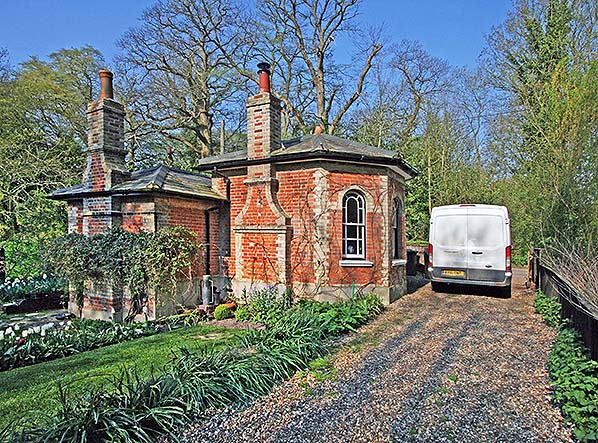
Bentley Church Road crossing gate keeper’s cottage in October 2018. The probable site of the station was in front of the cottage.
Photo by Nick Catford 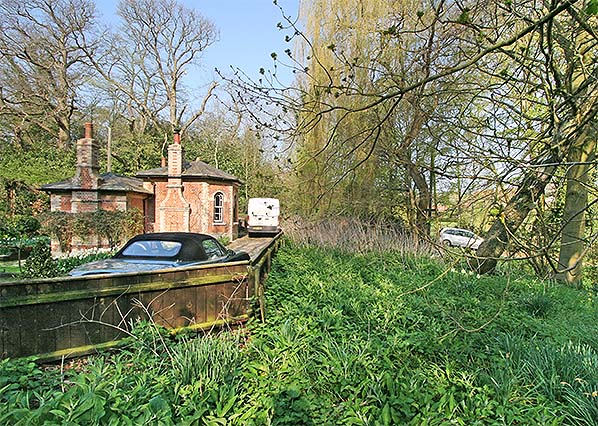 Bentley Church Road crossing gate keeper’s cottage in October 2018. The probable site of the station was in front of the cottage.
Photo by Nick Catford 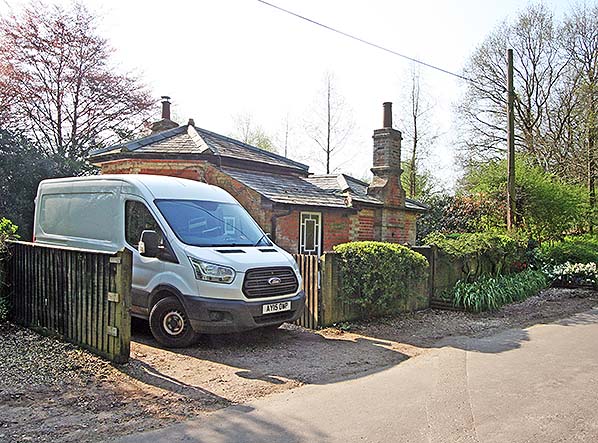
The site of Church Road crossing in October 2018.
Photo
by Nick Catford
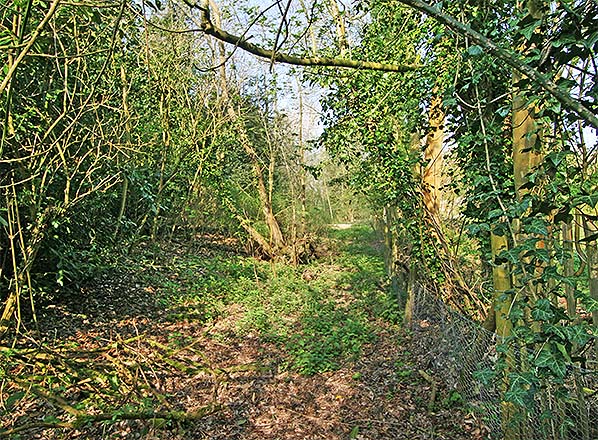

|
/route_map.gif)
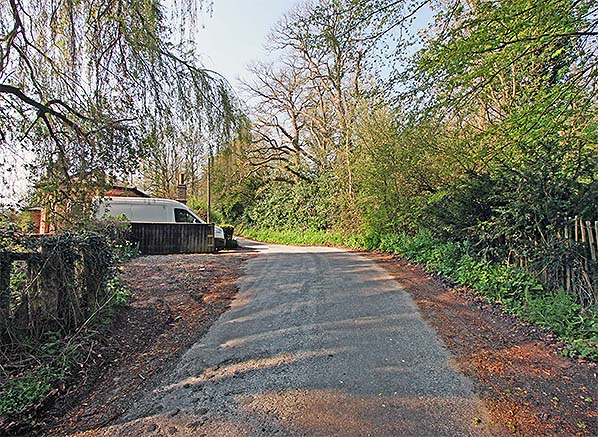
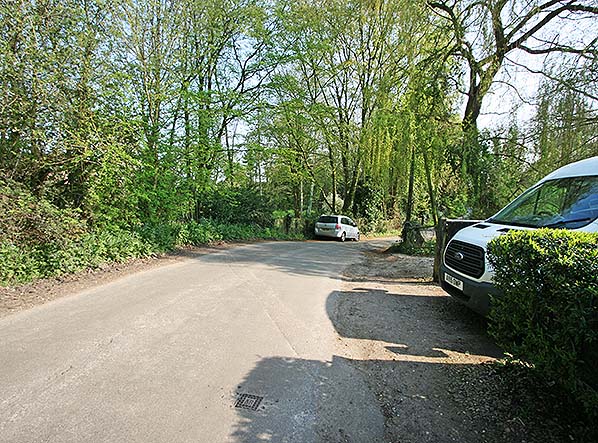

 Home Page
Home Page